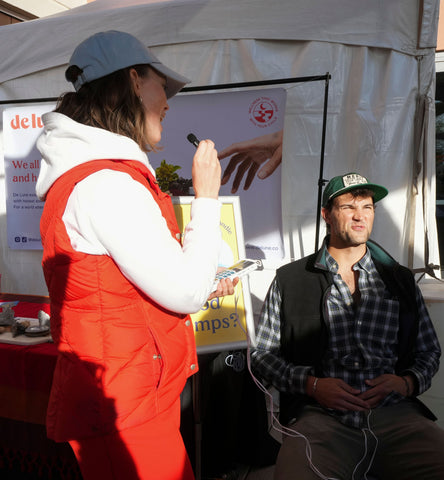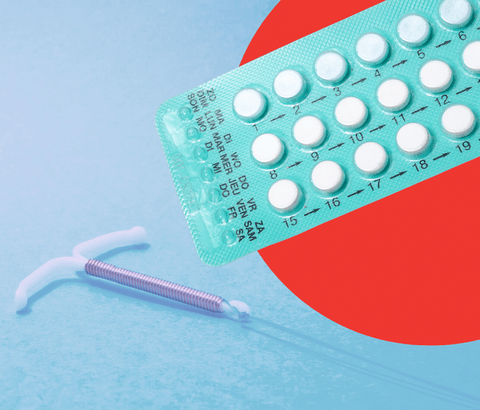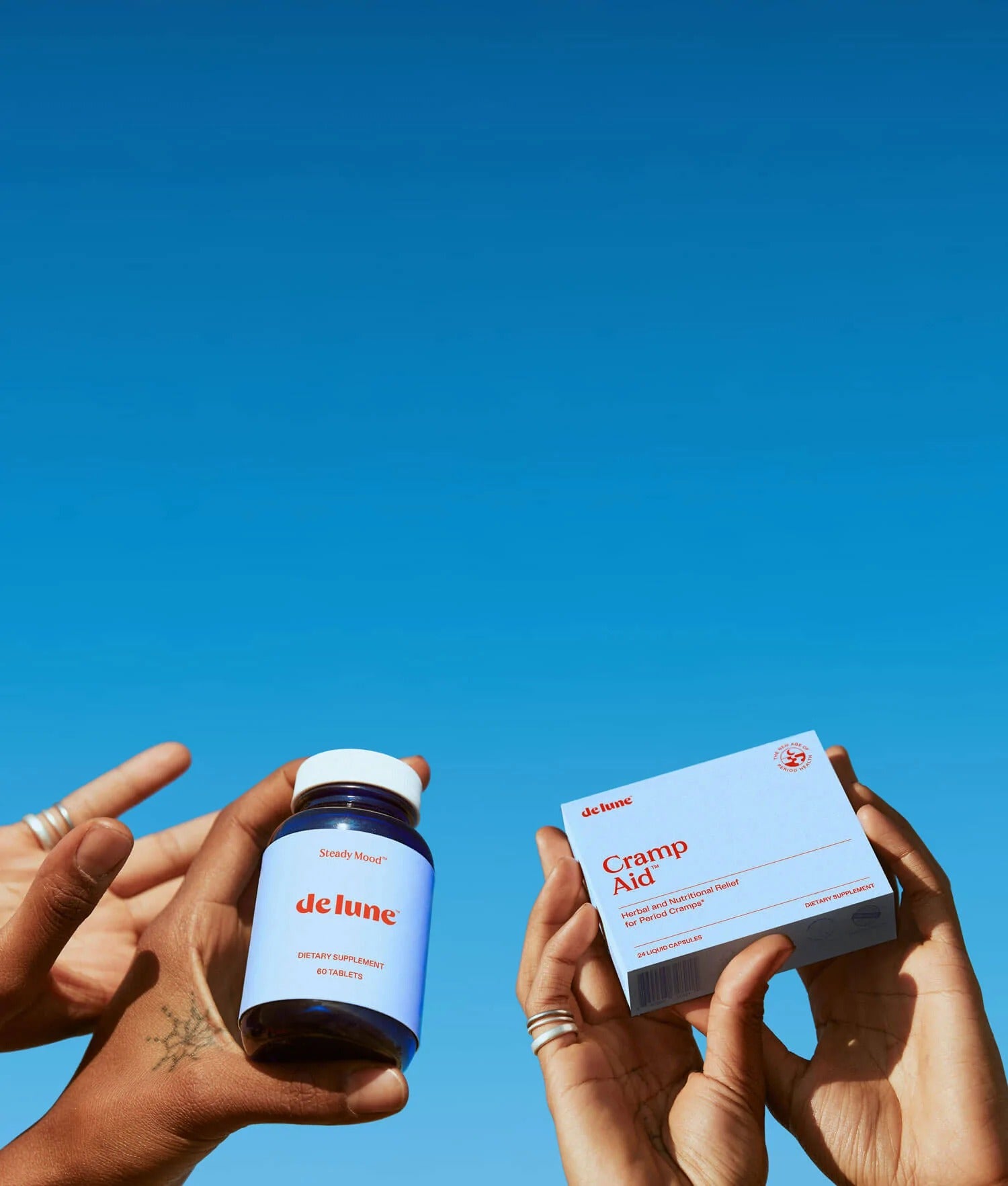Walk into a gyno’s office with complaints of period cramps, PMS, or irregular periods, and you’ll likely be offered hormonal birth control.
58% of all birth control pill users rely on the method, at least in part, for reasons other than contraception, like to manage period symptoms or to “regulate” their cycle.
While hormonal birth control can be effective at improving cramps, PMS symptoms, and the timing of periods, it affects general health and hormonal functioning in ways that aren’t always discussed in the gyno’s office—specifically with regard to the hormone progesterone.
- Progesterone is a powerful natural hormone with notable benefits.
- Progestin is the synthetic drug counterpart of natural progesterone. Progestin is found in all types of hormonal birth control.
- Progestin may have some, but not all, of the benefits of progesterone, but it may also have side effects.
- There are other means of managing bothersome period symptoms besides hormonal birth control.
What is progesterone?
Progesterone is a hormone that’s produced by the ovaries during the second half of a natural menstrual cycle. Along with estradiol (a type of estrogen), it is one of the two hormones that dictate the ebbs and flows of the menstrual cycle.
Progesterone is the main hormone involved in triggering a pregnancy and keeping it going. It helps sperm swim toward an egg; should an egg be fertilized, it prepares the uterine lining to nourish a growing fetus, and prepares the breasts to produce milk.
While mostly considered a pregnancy hormone, progesterone is beneficial for other reasons:
It’s naturally anti-inflammatory
Which makes sense considering where and when progesterone is made. Most of the progesterone found in cycling bodies is produced by the ovaries following ovulation. Ovulation is when an egg is released from the ovaries, which ruptures the surface of the ovary. Like with any wound, inflammation is involved, and conveniently, the progesterone that’s produced by the ovaries shortly after ovulation soothes the inflammation. Once made, progesterone is circulated throughout the body, delivering its anti-inflammatory benefits to other tissues.
It protects the brain
Progesterone helps safeguard the brain and nervous tissue by strengthening and repairing their protective layers. (Some types of progestins, discussed further below, may also do the same.)
It’s a calming hormone
Studies show progesterone has anti-anxiety effects and helps stabilize our response to stress.
It preserves skin
Research shows progesterone may protect skin against signs of skin aging, like wrinkles and loss of elasticity.
It temporarily relieves bloating
Progesterone reduces levels of another hormone called aldosterone, which causes the body to retain sodium. The less sodium we hold onto, the less water we hold onto (remember osmosis from high school bio?), which helps deflate the puffy bloat all that water weight created. However, elevated progesterone levels are short-lived, and so are its anti-bloating effects. When progesterone drops in the days leading up to menstruation, aldosterone, no longer suppressed by progesterone, rebounds and compensates by retaining extra sodium. This is why you may feel bloated before and during your period.
Progesterone may also protect against nicotine addiction, help build bone and muscle, and play a role in boosting female libido and preventing breast cancer.
What are progestins?
‘Progestins’ describes drugs that are similar to progesterone, but are synthetically made. ‘Progestin’ is a general term; there are many different types of progestins, including progestogen, progestagen, gestogen, gestagen, and levonorgestrel. The term ‘progestin’ can be used interchangeably with any of the above, but it cannot be used interchangeably with ‘progesterone’—the natural hormone produced by the ovaries.
Progestin is found in all types of hormonal birth control because it suppresses ovulation. Without ovulation, you do not release an egg, and therefore cannot become pregnant.
The ovaries only make natural progesterone following ovulation. Thus, your ovaries stop making progesterone when you begin taking progestin as hormonal birth control.
For that reason, hormonal birth control does not “balance” or “regulate” hormones; it switches natural reproductive hormones off entirely, and replaces them with synthetic hormones.
Risks of progestins
Progestins are pharmaceuticals, and all pharmaceuticals can have side effects. Side effects may include acne, excess body hair, changes in cholesterol levels, bloating, and increased risk of blood clots. However, there are many different types of progestins, and each has a slightly different side effect profile. If you’re considering taking a progestin, ask your doctor about which side effects to expect.
Someone’s risk of side effects from progestin depends on the type of progestin used, its dose, and how that person reacts to it. When progestin and estrogen are combined (as they often are in hormonal birth control), they can interact with each other in complex ways that are difficult to predict and can vary greatly from person to person.

Do progestins have the same benefits as progesterone?
Mostly no, but it’s complicated. Progesterone and progestins are similar in chemical structure, but not the same. Different molecules have different effects in the body.
Progestins have some of the same effects as progesterone, but other opposite effects. For example, progestins thicken cervical mucus so that it’s unfriendly to sperm, whereas progesterone helps sperm swim faster toward an egg. However, both prevent the uterine lining from becoming too thick.
So while progestin may come with fewer benefits compared to progesterone, and possibly some side effects, the progestin in hormonal birth control does have a benefit that natural progesterone will never have: consistency.
Progesterone levels predictably rise mid-cycle following ovulation around day 14, then plummet before your period starts. As with progesterone’s temporary anti-bloating effects, benefits only last for as long as progesterone levels are elevated. When they fall around day 21 of your cycle, you may experience monthly PMS symptoms as a result of progesterone withdrawal.
Because hormonal birth control provides a steady dose of progestin consistently throughout the month, withdrawal symptoms are only possible when you stop taking hormonal birth control, rather than every month.

You have options for managing period symptoms besides hormonal birth control.
Whether or not to use hormonal birth control is a complex decision that is best made with your full picture of pregnancy, period, and health goals in mind.
Although hormonal birth control can help manage period cramps and PMS, it entails missing out on the benefits of natural progesterone.
When used for contraception, ‘missing out’ on progesterone is the whole point of hormonal birth control; progesterone is a pregnancy hormone, and contraception prevents pregnancy. If your goal is period symptom management instead of contraception, you might want to consider management options that don’t cost you your natural progesterone and its benefits.
Herbal and nutritional approaches are natural, non-hormonal, evidence-based solutions to period cramps and PMS.
At De Lune, we believe that more research-backed, non-drug options are needed for period symptom management.
That's why we made Cramp Aid and Steady Mood.
Cramp Aid is a non-drug, high-potency blend of the most effective nutrients and herbs for period cramps. It’s use-as-needed cramp relief that’s designed to quickly and safely reduce the inflammation in the uterus that leads to period pain.
Steady Mood is targeted herbal and nutritional relief for PMS mood swings and stress. We combined the most evidence-based nutrients and herbs for PMS symptoms like edginess, bloating, fatigue, body aches, headaches, and cravings into one daily multivitamin. Ingredients like magnesium, zinc, saffron, and rhodiola help you manage symptoms of progesterone withdrawal and stay happy and strong, all month long.







